When it comes to modifying a car for the first time, intake and exhaust upgrades typically get top priority. They’re relatively cheap, easily accessible, and they provide a small but noticeable increase in horsepower.
This is especially true for simple but effective upgrades like straight pipe exhaust systems. If you’re on the lookout for an aftermarket exhaust and if you’ve done your research, chances are that you’ve come across the term “straight pipes”.
Straight piped exhausts are extremely popular because of how free-flowing and unrestricted they are. However, at the same time, they’re also controversial because they get obnoxiously loud, and they pollute quite a bit.
The biggest challenge with straight piped exhaust systems is navigating the legality of deleting your catalytic converter. Which is why most enthusiasts turn to this upgrade exclusively for track-driven cars.
In this article, we’ll explore exactly what it means to straight-pipe your car, and we’ll discuss everything you need to know before going ahead with it.
What Does It Mean to Straight Pipe a Car?

The simplest explanation of a straight pipe exhaust system is that it’s basically a regular exhaust system with the catalytic converter, pre-cat, muffler, and resonator removed.
The idea behind removing these components is to reduce exhaust back pressure and improve the scavenging effect of your exhaust system, freeing up some more horsepower as a result.
In other words, straight pipes will allow your engine to breathe better. The sooner your exhaust gasses exit the tailpipe, the sooner your combustion chamber will be free of stale fumes, which translates to better volumetric efficiency.
It’s worth mentioning that while some people will refer to a car as “straight piped” even if they only replace the cat-con with a test pipe. But a true straight pipe exhaust system will have all restrictive components removed.
Without these components, it’s not hard to see how a straight pipe exhaust system gets its name. When you look at the system, it’s nothing but a hollow pipe that runs from the exhaust manifold, all the way to the tailpipe.
Even though it sounds simple, the pipe diameter, bends, and angles will heavily impact your straight exhaust’s overall performance.
Legality of Straight Piped Exhaust Systems
True straight pipe exhaust systems involve removing the catalytic converter, which is illegal in all 50 states. But that only applies if your car is street driven; the rules for track-cars are a lot different.
So unless yours is a track-only car, straight piping it will definitely get you into trouble with the law. Not to mention the obnoxiously loud exhaust note — that alone will get a lot of unwanted attention from not only the authorities, but also your neighbors.
As long as you aren’t driving your car on public roads then you can legally install a straight pipe exhaust system. Whether or not you’ll get into trouble totally depends on the jurisdiction in your region.
If you get caught driving without a catalytic converter, you will be required to pay a fine of up to or even more than $10,000.
That said, some states don’t check for emissions as strictly as others do. In those states, you might be able to get away with a straight pipe exhaust.
Straight Pipe vs Test Pipe
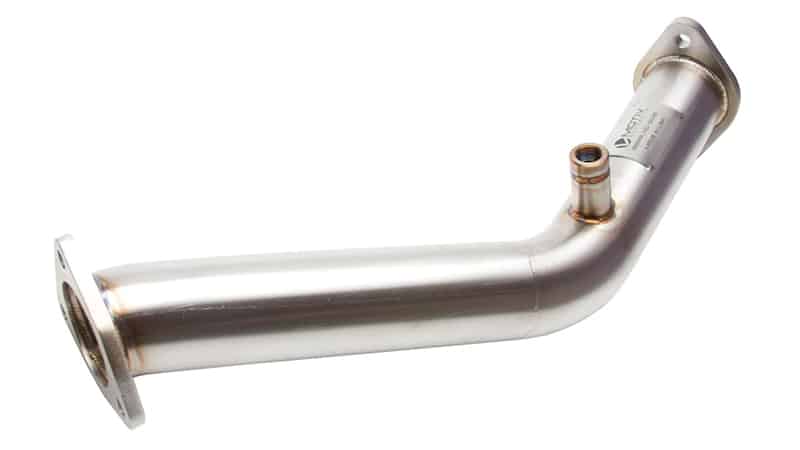
The terms “straight pipes” and “test pipes” are often used interchangeably. Essentially they mean the same thing, with the exception that test pipes are meant to replace the catalytic converter.
Whereas the term “straight pipes” can be used to describe a hollow pipe that replaces any of the following exhaust restrictions:
- Muffler
- Resonator
- Catalytic convertor
- Pre-cat
Test pipes are intended to test the effectiveness of your catalytic converter. The idea is to temporarily install it instead of the cat-con to compare the difference between how the engine runs with and without it.
This difference reveals anything that might be wrong with your cat-con; whether it’s clogged, ineffective, or if it’s at the end of its life cycle.
Some people decide to keep their test pipes installed. Others prefer buying aftermarket test pipes.
If you decide to straight pipe your car, you’re going to want to install a test pipe in place of the cat con and source replacements for other restrictive components separately.
Some manufacturers offer complete straight pipe kits, so it’s worth considering if you want to avoid fabricating or sourcing each pipe from different places.
Does a Straight Pipe Add Horsepower?
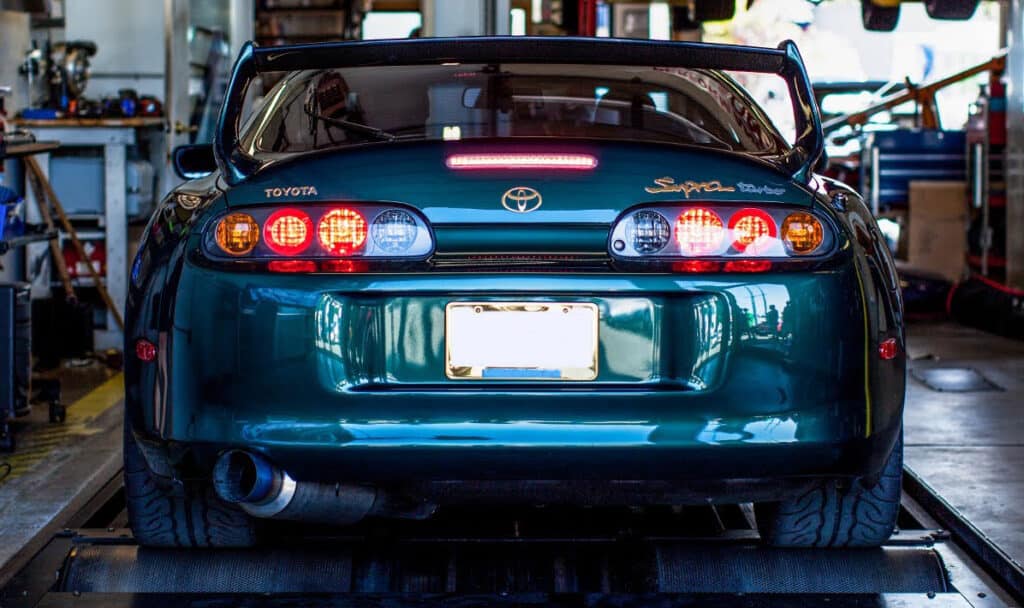
This entirely depends on the car in question, what mods it already has, and several other variables such as the design and size of the replacement pipes.
Many enthusiasts go for a straight pipe exhaust solely for the sound. But many others understand the implications it has on performance and see the bigger picture of how it’s going to fit into their overall build.
No exhaust system is perfect from the factory; automakers and engineers are under constant pressure to comply with emissions norms, and so stock exhaust systems almost always favor efficiency over performance.
You can bypass that by removing restrictive components such as the catalytic converter, muffler or resonator, and whatever else you have in your exhaust that obstructs the free flowing path.
When done right, straight piping your car will definitely free up a few extra ponies, especially if your car is turbocharged.
To understand how and why this works, you need to know what exhaust backpressure and scavenging is all about.
But if done poorly, straight piping your exhaust might not yield any performance benefits at all. If you get the pipe sizing all wrong, it might do more harm than good. And even if it works, it won’t be a huge jump in performance.
The most important part is to get your engine tuned after completing your exhaust upgrade. Doing this will allow your engine to adapt to the altered exhaust flow rate so it can optimize the air-fuel ratio to suit.
Straight Pipe vs Regular Exhaust Upgrade
There are alternatives to straight piping, such as installing aftermarket catback and axle back exhausts.
You can combine one of the two with high-flow catalytic converters to keep your build legal and as close to peak performance as possible.
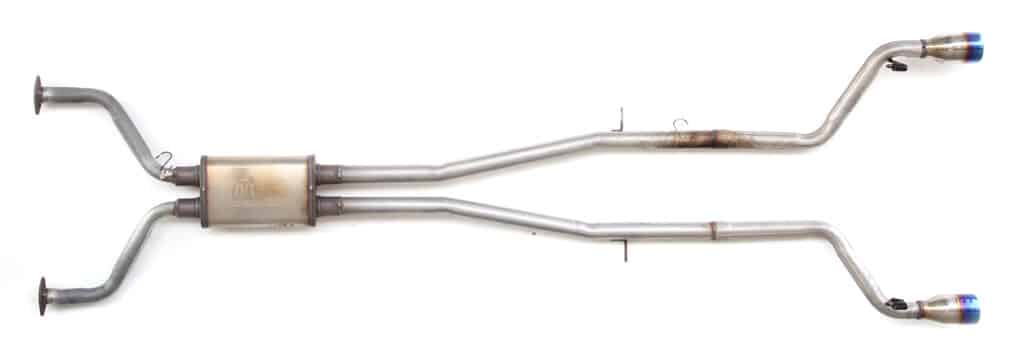
Removing the catalytic converter is where you’re going to get the most performance gains. But as mentioned earlier, doing so is currently illegal in all 50 states.
The next restrictive part is the resonator, which is pretty much a primer for the muffler. It’s an echo chamber the exhaust passes through to prime the sound level before it reaches the muffler.

The resonator simply treats the sound before it reaches the muffler so the muffler can better handle it. We’ve discussed this in detail in our guide that explains the purpose of exhaust resonators.
In a stock exhaust system, removing just the resonator will make little difference because the airflow is already so restricted from the catalytic converter.
However, if you complete a catalytic converter delete and leave the resonator on, it will only marginally impact performance.
If you’re looking at just removing the resonator, it’s legal, but it might make your car too loud for local noise ordinances depending on where you live.
Just like it’s illegal to remove the catalytic converter in all 50 states, it’s also illegal to remove the muffler.
However, unless you take your car to an inspection station, you likely won’t get a ticket for removing the muffler.
What Does a Straight Pipe Exhaust Look Like?
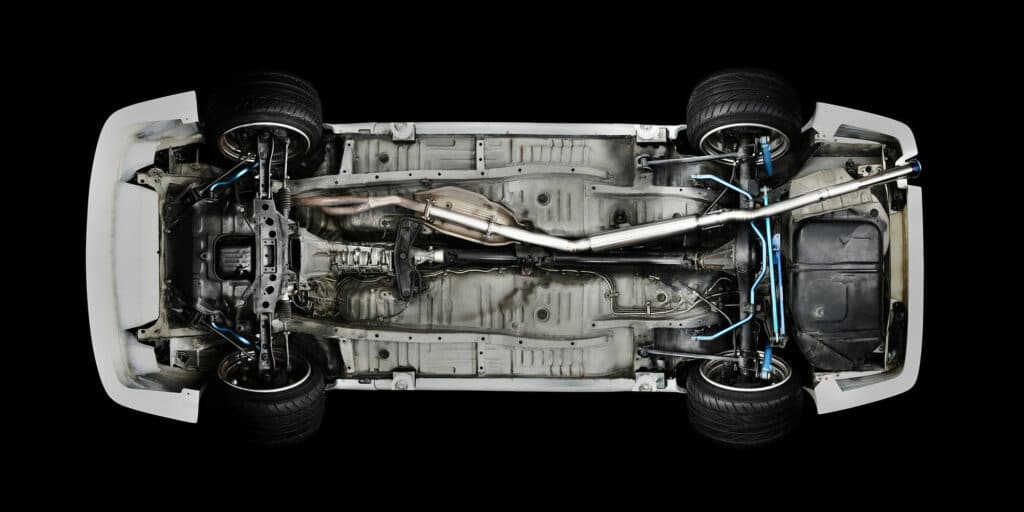
A straight pipe exhaust system gets its name from its appearance, but it’s not always a perfectly straight pipe per se.
Most straight pipe exhaust systems have the same width pipe as the rest of the exhaust system, but there are no components in between the exhaust manifold and the tailpipe.
The best straight pipe systems have as few turns as possible to allow the least amount of resistance for the exhaust to leave the vehicle.
A few twists and turns are necessary to navigate the underside of the vehicle, but for the most part, it’s just a straight pipe to the end of the vehicle.
Finally, some vehicles try to “hide” the straight pipe setup by running the pipe through various other components without using them.
People usually do this because straight pipe exhaust systems are illegal in the United States, but it requires a bit more work and the typical exhaust components are just there to hide the straight pipe.
Will This Upgrade Trigger Error Codes?
Making any significant changes to the airflow of your engine will give you error codes and the dreaded check engine light. This includes both intake and exhaust upgrades.
Your ECU has a bunch of sensors that keep feeding it information which allows it to constantly monitor whether everything is working the way it’s supposed to.
Examples include:
- Throttle position sensor
- MAF sensor
- MAP sensor
- Intake air temperature sensor.
With regards to straight piped exhausts, it’s the O2 sensor or oxygen sensor that triggers the check engine light, owing to the cat delete. Catalytic converters are typically assisted by two O2 sensors: one before and one after.
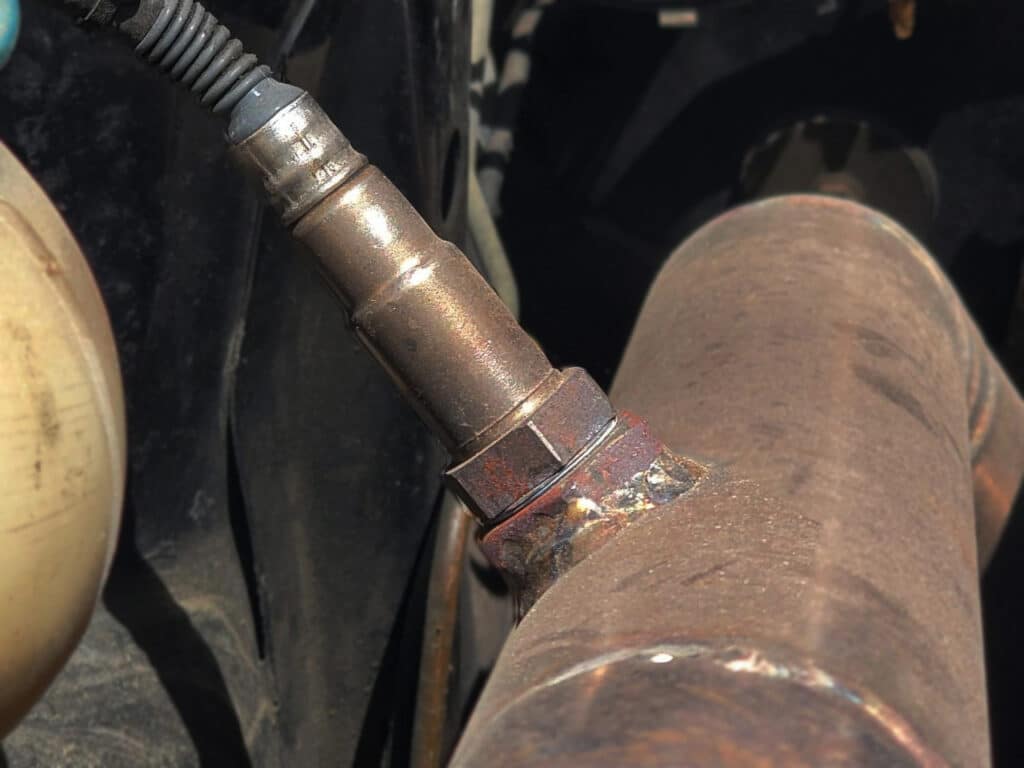
The sensor is located before the converter detects the presence of oxygen in the exhaust stream after combustion.
If there’s oxygen present, then it tells the ECU to inject more fuel, with the goal of bringing the air-fuel mixture as close to the Stochiometric point as possible. The downstream O2 sensor checks the efficiency of the catalytic converter.
With the converter removed, it throws off the accuracy of these sensors, which triggers the check engine light. What’s worse is that your engine will try to adjust the air fuel ratio according to the ECU’s inaccurate readings.
That’s why it’s so important to get your engine tuned after removing restrictions from your exhaust, especially the cat-con. Consider looking into O2 simulators as well.
These simulators essentially fool the ECU by mimicking the signal of an O2 sensor. That way you won’t get a check engine light even if you remove the catalytic converter.
However, that’s not the same as tuning your engine; you absolutely should get a tune after straight-piping your car.
How to Straight Pipe a Car
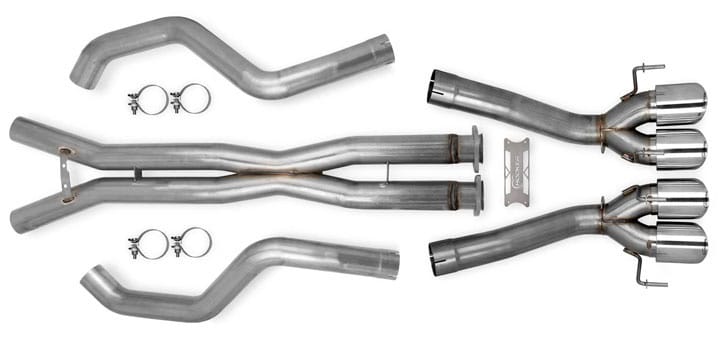
Changing out exhaust components by yourself is not too difficult. Anyone with basic mechanical know-how and wrenching experience can install and replace exhaust components.
All you need is a mechanics tool set and the replacement parts. Installing the replacement parts is the easy part; what’s difficult is choosing the right parts, which entirely depends on what car you drive and what you’re modifying it for.
The easiest way to get the job done is to order a straight pipe exhaust system for your specific car. These kits come with everything you need to complete the exhaust swap.
Bolt-on kits don’t require any welding, allowing you to simply swap out the parts and tune your engine.
But if you can’t find a bolt-on straight pipe kit for your car, you’ll have to fabricate the piping yourself and weld everything together to get it to work. It’s a lot more work, and if you don’t have a welder for home use, you’re out of luck.

Here are some steps you can follow as a good reference point for most kits. We highly recommend reading the installation instructions that come with your kit before proceeding.
While you might be able to reach underneath your car without jacking it up, once you start to drop the old exhaust out, you will appreciate the extra space.
Get the vehicle up in the air, preferably with enough space for you to stand underneath it while you’re working. Proceed to remove the old exhaust system parts.
Typically, kits start with components right around the catalytic converter, so you shouldn’t need to remove everything.
There are typically bolt-on clamps to help you get everything off. It’s very common for these bolts to have some rust on them, making them difficult to navigate, but a little penetrating oil is usually all you need to get everything off.
Once you take the old exhaust system off, proceed to install your new parts. If you get a car-specific kit, this step is pretty easy.
Just slide the new exhaust over the old pipe, tighten down the clamp, and install and bolts necessary to hold the new exhaust system up.
Once you finish installing the new exhaust system, get all four wheels back on the ground. Slowly lower your vehicle so you have easy access to the engine bay and the OBD-II plug inside the cabin.
Straight Pipe Pros and Cons
Most performance upgrades come with limitations of some sort. It’s just something you’re going to have to deal with if you’re modifying your car to make it do things it wasn’t designed for.
For clarity, here’s a quick list revisiting the pros and cons of straight piping your car:
Pros:
- More power: As obvious as it is, straight piping your car will give you more power, as long as you do everything right and get a tune.
- A better exhaust note: This heavily depends on the car in question. Straight piped exhausts sound famously terrible on some V6 engines. In some cars they can sound quite nice though.
Cons:
- Straight pipe exhausts are illegal: As mentioned earlier, driving without a catalytic converter is against the law.
- Neighbors will hate you: Unless your neighbors are car enthusiasts, expect nods of disapproval from your neighbors and people in traffic.
- Might do more harm than good: If you don’t know what you’re doing or if you blindly install exhaust components that aren’t designed specifically for your car, expect to lose some horsepower.
- Street cred: This is highly debatable, but if you straight pipe your Toyota Avalon hoping to impress enthusiasts, you’re setting yourself up for disappointment. Especially if the rest of the car is bone stock.
Concluding Summary
What you should do with your car is ultimately your choice. It’s not uncommon for car enthusiasts to perform invasive modifications to their cars solely for their aesthetic appeal, at the expense of poor performance.
The first mod that comes to mind is running excessive negative camber or Onikyan. In contrast to something like that, straight pipe exhausts actually have performance advantages when done right.
But all things considered, we don’t recommend this upgrade to anyone who isn’t super into racing. The drone will drive you crazy, and having to constantly look over your shoulder isn’t fun.
What are your thoughts on straight pipes? Let us know by leaving a comment below!
If you enjoy reading this article, show us your support by sharing it on Reddit, Facebook, or your favorite online communities.

